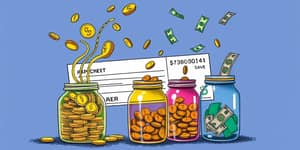As economic pressures mount, millions of Americans are exploring side gigs as a pathway to financial resilience. This guide unveils strategies to transform gig earnings into a roadmap for debt elimination and lasting stability.
Whether you’re a seasoned freelancer or new to the gig economy, the steps outlined here draw on real-world data and inspiring success stories. With careful planning, your side hustle can become the cornerstone of a debt-free future.
The Modern Side-Hustle Landscape
Side hustles have shifted from niche pursuits to mainstream financial strategies. As of 2025, between 34% and 44% of Americans maintain one or more gigs, reflecting widespread adoption across demographics.
Gen Z leads the charge, with 70% actively engaged in freelance or gig work, while 50% of Millennials and 35% of Gen X also participate. These trends underscore a generational shift toward embracing financial flexibility and creative control over personal income streams.
- Food and grocery delivery: 15%
- Online freelancing: 15%
- Seasonal and part-time roles: 14%
Forecasts suggest the gig workforce could swell to 83% of the population by 2027, as emerging platforms lower barriers to entry. Side hustles have grown into a $2.58 trillion market, demonstrating the potency of diversified income streams across multiple platforms in modern personal finance.
Income Expectations and Realities
One of the most common misconceptions is that side hustles guarantee substantial earnings overnight. In reality, the average monthly income from side gigs is $1,215, while the median stands at $400, reflecting a wide variance in success.
Approximately 71% of side hustlers earn under $500 per month, and 25% make less than $100. Yet those dedicating 20 hours or fewer weekly to specialized services, such as high-end consulting or technical freelancing, can command $60–$500 per hour.
These figures highlight the importance of aligning your side hustle with market demand and your unique expertise. For example, a graphic designer charging $75 per hour may earn more in 10 hours than a delivery driver does in 20.
Side hustlers not living paycheck to paycheck report average monthly gains of $2,328, while those still managing tight budgets see between $1,576 and $1,836. This data underscores both the potential upside and the baseline reality for most participants.
Managing and Maximizing Gig Income
Effective management transforms volatile earnings into predictable contributions toward debt elimination. Start with meticulous record-keeping: log each payment, track mileage, software subscriptions, and other business expenses.
Leverage simple accounting apps or spreadsheets to categorize transactions under income, fixed costs, and variable expenses. Many freelancers swear by tools like Wave, QuickBooks Self-Employed, or even dedicated spreadsheets with automated formulas.
Next, establish a clear budget. Allocate 20% of every gig payment to taxes, 10% to an emergency fund, and the remaining balance to your debt repayment plan. This structured financial framework for tax compliance ensures no surprises during tax season and builds a cushion for income lulls.
- Estimate monthly net earnings: subtract average costs and taxes.
- Automate transfers: set up recurring deposits into debt accounts.
- Review quarterly: adjust your rate or hours based on performance.
- Reinvest surpluses: upgrade tools or courses to boost earning potential.
By treating your side hustle as an entrepreneurial venture, you cultivate professional discipline that drives consistent growth and unlock sustainable progress.
Debt Freedom Pathways
With your earnings systematized, channel them into a targeted debt repayment strategy. Begin by listing liabilities from highest to lowest interest rates for an avalanche approach, or from smallest to largest balances for a snowball effect.
The avalanche method saves the most in interest, while the snowball method fuels motivation through quick wins. Choose the technique that aligns with your personality and financial objectives.
Imagine clearing your highest-rate credit card within months. Each debt paid off adds its freed-up payment to the next target, creating a compounding effect that accelerates progress. This methodology is a proven path to financial freedom.
Psychologically, tracking debt reduction builds momentum. Visual aids like charts or apps that display a shrinking balance can be powerful motivators to maintain consistency.
Pitfalls and Considerations
- Income volatility: ebbs and flows in gig work require a cash buffer.
- Tax complexity: failure to file estimated taxes can lead to penalties.
- Burnout risk: balancing multiple gigs and personal life demands clear boundaries.
Mitigate these risks by building a one-month living expense fund sourced from your side-gig profits. Automate tax payments to avoid surprises, and set strict work-life schedules that include breaks and self-care.
Remember, hustling smart matters more than hustling hard. Quality of life and mental health are integral to long-term success.
Case Stories of Success
Maya, a 27-year-old tutor and freelance writer, dedicated 15 hours weekly to side gigs. She earned $1,800 per month, funneling every dollar into her $15,000 student loan. Nine months later, the loan was gone, and her $600 monthly payments were redirected into an emergency fund.
Marcus, a rideshare driver, optimized peak hours and referral bonuses to net $1,200 monthly after expenses. He focused on eliminating a $6,000 credit card balance within six months, saving over $800 in interest and boosting his credit score.
Elena combined pet-sitting and virtual assistance to generate $2,200 monthly. By automating her repayment plan, she cleared $10,000 of medical debt in under eight months, gaining the freedom to start investing in retirement. Each success reflects targeted strategies yielding transformative financial results.
Looking Ahead: The Future of Gig Work
The gig economy is poised for continued expansion as remote platforms, AI-driven marketplaces, and global connectivity reshape work. Skills-based gigs, from coding to creative services, will command premium rates, offering lucrative opportunities for those who upskill.
Communities and networks dedicated to freelancers will proliferate, providing resources, mentorship, and collective bargaining power for better rates and protections. Future side hustles may include AI model training, virtual reality design, or even remote health consultations.
Embrace lifelong learning and adaptability. Leverage online courses, peer groups, and industry events to stay ahead. Your side hustle not only pays bills; it can become a dynamic career engine driving long-term financial empowerment and lasting stability.
Start today: design your plan, set realistic goals, and take the first steps toward a debt-free tomorrow fueled by your gig earnings.
References
- https://luisazhou.com/blog/side-hustle-statistics/
- https://www.lendingtree.com/debt-consolidation/side-hustle-income-survey/
- https://www.pymnts.com/consumer-insights/2025/side-hustle-nation-more-americans-seek-extra-income-amid-economic-uncertainty/
- https://www.sidehustlenation.com/side-hustle-statistics/
- https://spokesman-recorder.com/2025/03/25/side-hustle-finance-strain/
- https://fortunly.com/statistics/gig-economy-statistics/
- https://www.bankrate.com/credit-cards/news/paying-off-debt-with-side-hustle/
- https://www.self.inc/info/side-hustle-statistics/










